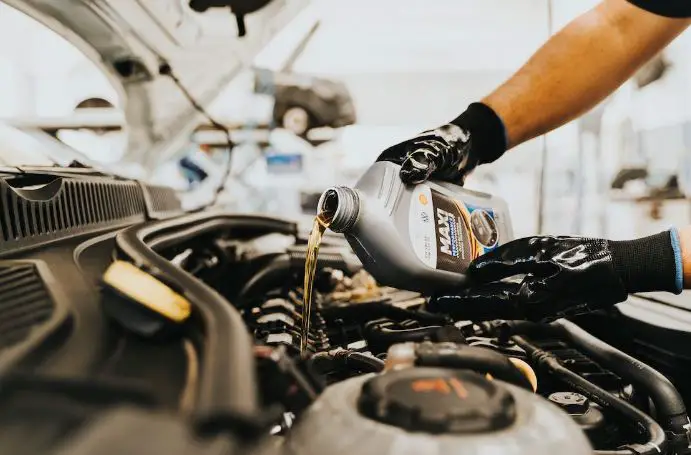In a previous blog post, we talked about catalytic converters; what they are, how they work and why it’s important to keep them in good repair. Related to the subject of catalytic converters, today we’re putting our focus on downpipes, and especially looking at the differences between catted and catless downpipes. Let’s start with the basics.
What is a Downpipe?
The downpipe is a part of your car’s exhaust system. Its main function is to connect the header and the catalytic converter, channelling exhaust gas into the converter before it gets to the end of the exhaust system. Unless you have given much thought to the performance of your car’s turbocharger, it’s unlikely that you’d even considered the pipe responsible for moving spent exhaust fumes through the system to the catalytic converter. As long as it works, you may not care.
The downpipe is the main conduit through which exhaust fumes from the turbine housing reach the vehicle’s exhaust system. Within the downpipe is usually one restrictive catalytic converter, which as you likely know is responsible for cleaning the exhaust fumes of dangerous substances that make the fumes incredibly hazardous to human respiratory health.
Downpipes are actually quite an important topic of conversation among those who wish to mod their cars and boost the vehicle’s performance. When a car is fitted with a turbocharger, for example, a change in downpipe can actually boost airflow and thus enhance performance. Many cars with turbochargers end up being restricted by the poor nature of their own exhaust pipe bending. Switching out the downpipe can change all of that.
Catted Vs. Catless Downpipe
Broadly speaking, people talk about downpipes as being of two sorts, “catted” or “catless.” But what do these terms mean? What’s the difference between these two styles of downpipe? First of all, this is a term you’ll only really find in the aftermarket car part world. OEM downpipes are always connected to catalytic converters because that’s the standard they have to follow.
Catted downpipes are fitted with a high-flow catalytic converter, which cleans the gases just as your OEM catalytic converter will. A catless downpipe is one that is not fitted with a catalytic converter. In the absence of the converter, the exhaust fumes suddenly take on a rather unpleasant odor. That’s because those nasty respiratory-attacking fumes are not being cleaned up as they should be. On the other hand, airflow is excellent and the car’s performance will certainly be enhanced.
What Is a Drawback of Standard Downpipes?
As we mentioned further above, a standard downpipe is fitted with a restrictive catalytic converter. While they obviously are instrumental in keeping our air clean and breathable, they are no friend of the high-performance car when you want it to perform. It can be rather disappointing to shell out tens of thousands of dollars just to discover that the car you are driving has its performance restricted by the capacity of its stock downpipe and catalytic converter. This is the main downside in your standard-issue downpipe.
What Benefits Do Aftermarket Downpipes Bring?
Aftermarket downpipes enable you to improve on the airflow of the stock pipe because they remove the restrictive aspect. These aftermarket alternatives are very often made with a greater diameter, which creates more space for the flow of exhaust fumes and more space for the turbo to spin up. That extra space may seem like a small change, but it’s just what your turbo needs to operate with less lag and to generate more spool.
In other words, an aftermarket downpipe is allowing you to enjoy your car’s performance features much more closely to the way that it was intended you enjoy them when they were designed. By stopping the exhaust gases all colliding with each other and creating turbulence, you generate a system that is much more balanced and capable. The following are the types of aftermarket downpipes that you might find available to you:
- Simple pipe with flange design
- Split bell-mouth
- Regular bell-mouth
- Divorced wastegate
- Cast outlets
- Formed piping
What Is the Benefit of Using a Catless Downpipe? Is there a Downside?
The benefit of the catless downpipe is essentially an upgraded version of what we have described already further above. It almost eliminates the problem of backpressure altogether and allows incredibly fast spooling of the turbocharger.
As you might imagine, however, it’s not all upside when it comes to catless downpipes. A number of question marks hang over them that should give you some pause for thought.
First is the odor. We touched on this above when comparing catted and catless downpipes. The fact is that without the process in place to remove the noxious gases and other harmful substances found in exhaust fumes, they become rather pungent. On the racetrack, this isn’t much of a problem since there aren’t so many people around to smell them. It does partially lead us to the next issue, though.
Second is legality. There’s an abundantly clear reason that authorities have mandated catalytic converters for so many years now. While they do increase the amount of CO2 that a car produces, they cut down the more directly toxic substances that can cause immediate health problems to human populations. In some locations within the US, if you are caught with a catless downpipe, you might face fines of up to $2,750 and your car could get impounded.
Finally, there’s overboost. One more problem that exists for catless downpipes is overboost, also known as boost creep. In short, there is a buildup of air within the turbocharger’s turbine housing. When that happens, the boost capacity also increases, which might sound great at first, but inevitably it leads to the OEM fuel system becoming overloaded. This can have dire consequences for your car, ultimately.
Conclusion: How About a Sports Cat Instead?
Is the compromise solution to these questions over cat vs. catless simply to get a sports cat? More formally, these are high-flow catalytic converters, which can give you the best of both worlds. They reduce the power loss, boost efficiency and keep your car street legal and your streets odor- and noxious-gas-free.
If you are looking at aftermarket downpipes, then this is the type we would recommend as the best solution to get greater potential performance but without crossing any strange legal boundaries.
Go Home









